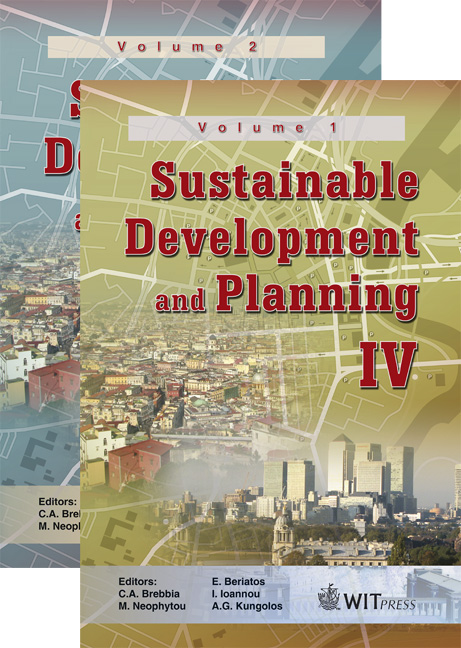The \“Shavadun” As An Ecological Solution For Architecture In A Hot Climate
Price
Free (open access)
Transaction
Volume
120
Pages
11
Page Range
303 - 313
Published
2009
Size
1,297 kb
Paper DOI
10.2495/SDP090301
Copyright
WIT Press
Author(s)
R. Rezaee, R. Vakilinejad & M. Shahzadeh
Abstract
Our cities worldwide are plagued with the hazards of global warming, ozone layer destruction and acid rain, caused by the over-consumption of energy. Such dilemmas can be offset by using less energy in innovative ways. We, as architects, have to make important decisions about the types of our buildings. To reach this purpose, ecological design focuses on the human-nature interface and uses nature. Although the green building movement is a relatively recent phenomenon, it has its roots in several previous generations of architecture. In the Iranian context, several figures laid the foundation for today’s ecological design. In such traditional buildings many forms, elements, materials, and techniques were used to achieve comfort and respond to the local climate. Courtyards, wind catchers, and shading devices are some of the most successful aspects. However, many probably haven’t heard about \“Shavadun”. It refers to a place situated about seven meters under the ground. In the hot and dry climate of some parts of Iran, \“Shavadun” is the best solution, providing comfort for the occupants. In this paper, first we introduce this architectural space according to some case studies in that context. Then we consider some other characteristics of \“Shavadun”, such as dimensions, temperature, ventilation, and daylight. We focus on the benefits of \“Shavadun” as a place for escaping from the hot summer days. Finally we propose ecological solutions based on the principals employed in designing \“Shavadun”, which can be integrated into today's buildings. The aim of this challenge is to use the wisdom of the past to meet the requirements of the current building, while retaining the positive cultural and environmental aspects of vernacular design. Keywords: Shavadun, underground space, architecture of ecology.
Keywords
Shavadun, underground space, architecture of ecology.





